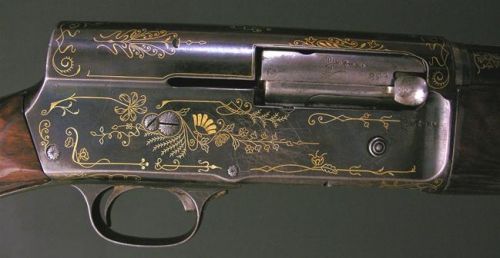Story and photos by Lisa Metheny
Typically, when a gun manufacturer is ready to launch a new gun model they often take the predictable advertising road and take out magazine ads, do television commercials, and maybe even hire a celebrity to endorse the new model and then sit back and hope for the best. Benelli, makers of world class firearms, is not your typical gun company and neither are the folks that make up their promotions and advertising departments. This group of creative individuals tends to think outside the box and they have a knack for generating more buzz and hype over new products than most companies could only hope to come up with. So unless you have been living under a rock for the last year, chances are you have probably heard about the now famous Vinci shotgun “Torture Test” that took place in Argentina.
When I first heard about the Vinci I was excited, like many shotgun enthusiasts, I thought perhaps the excitement generated was due to the media blitz created by Benelli rather than excitement over the gun itself. Benelli must have anticipated this type of skepticism and figured a torture test trip to South America would likely silence most critics. Not only did it silence many of the skeptics, the torture test may have raised the bar for future shotgun testing.
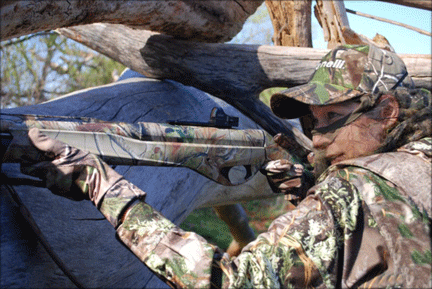
Some called it the torture test. Others referred to it as the ultimate shooting test because for three days nearly 88,000 rounds of ammo were fired from twelve Vinci shotguns. The stories generated from this media blitz dominated the press as story after story of the blazing hot Benelli Vinci began appearing in countless magazines, blogs, photos and newswires.
Perhaps some of the excitement was caused by the millions, yes I said millions, of doves that filled the sky hour after hour and which may have influenced some of these writers. Or perhaps it was the romantic lure of Argentina, although I doubt if a dozen manly, outdoorsy type men found standing shoulder to shoulder in a dove field under the blazing hot Argentina sun romantic. According to legendary outdoor writer J.Wayne Fears, the new Vinci shotgun was a homerun for Benelli. Todd Smith of Outdoor Life added that “the Vinci is an absolute ten.” So maybe it was the actual gun and not the media circus that generated the excitement over the Vinci. But whatever it was, I knew that I was anxious to give this shotgun a try.
My first opportunity to see the Vinci was all too brief as the editor for Shooting Times, Joseph VonBendict toted the gun to a Gil and Vicki Ash OSP shooting clinic that I was attending. In a sick sort of way it was like a mini torture test because of the fact that I only had the chance to shoot the Vinci a few times. It seems like anytime there is a new gun around gun enthusiasts, politeness is thrown out the window and we all become gun hogs. Thankfully, Joseph did let me shoot his Vinci and despite shooting a mixed bag of loads, from light Winchester AA to a few heavy Federal goose loads, I didn’t feel much recoil. Unfortunately, a few trigger pulls is not much of a torture test for me or the gun. Instead, it was just a brief introduction, more like a teaser, rather than an all-out test drive.

Fast forward nearly a year and I found myself embarking on a turkey hunt in Oklahoma with Benelli, Hunter Specialties and SHE Outdoor Apparel. Anytime you hunt with Hunter Specialties you know you’re going to get some great products to use and the same can be said about SHE Outdoor Apparel. And from my experience, any gun from Benelli would work just fine to shoot a turkey with. Thankfully, Cristi Gates of Benelli sent the Vinci 12 gauge for us ladies to use and I would get my own Vinci for three days. I could hardly wait.
Although the small cowboy town of Sayre, Oklahoma is several thousands of miles north of the dove filled skies of Argentina, there was still plenty of game for the Vinci to take aim at on nearly 24,000 acres of Rut and Strut Outfitters. Despite mile after mile of gently rolling hills, brushy draws and creek bottoms dotted with century old Cottonwood trees the land offered its own version of torture for the hunters and for the guns. Country duo Brooks and Dunn may have sung about it, but I was getting a taste of the famous Oklahoma Red Dirt. Like sand on the beach, the red dirt finds its way into every imaginable place, including inside zipped interior pockets, ears, nose, turkey calls, boots and guns, especially the guns. Add in the constant hurricane-like winds of western Oklahoma and the red dirt literally becomes part of your DNA.

Six women turkey hunters, a bumper crop of Rio Grande turkeys, an ample supply of ammo, and a Vinci for everyone gives you the makings of a great hunt. Despite the fact that we would not be shooting thousands of rounds of ammo, this hunt still would put the Vinci through the paces.
We had a wide range of shooters, from the beginning shotgun shooter to the intermediate level to the advanced level of shooter. As every shooter knows, if it don’t fit, you can’t hit, so the mix of body types, some with long arms, others with short arms and even a leftie shooter thrown in would create a challenge for the Vinci as it would need to fit a variety of body types.
The majority of firearms are made to fit one body type and that is the body type of a six foot lean man with long arms and a flat chest who is right handed, of which I am none of. The first noticeable difference about the Vinci compared to other brands is the quick change recoil pad system. Because I am a left handed, shorter arm shooter, I have had my fair share of traditional gun stocks that do not fit. The stocks are too long and usually come with a recoil pad with a pitch for the right handed shooter. More often than not the recoil pad requires a screwdriver or some other special piece of equipment to change the pad. Not the case with the Vinci. One twist and the pad was easily changed to accommodate a recoil pad for a leftie or to give a shorter length of pull.
Besides the ease of changing the recoil pad, there are several things that set the Vinci apart from other semi-auto shotguns. First, compared to the majority of semi-auto shotguns on the market today, the Vinci is lighter than others, weighing only 6.9 pounds. Because of its advanced ergonomics, the Vinci offers flawless gun movement. And with fewer moving parts, this equals less hassle, less cleaning and more shooting. An added bonus is the Quadra Fit buttstock module, making this gun easy to shoulder and with the uber-comfortable Comfort-Tech recoil system combined with the in-line inertia driven action, this gun is not only lightning fast but a blast to shoot. You simply forget you are shooting a 12 gauge. Also the gun breaks down and easily packs into its own cool James Bond-like distinctive carrying case.
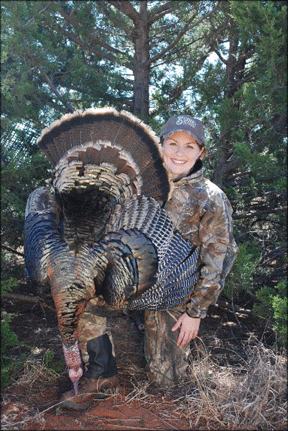
Forget the futuristic carrying case or the catchy marketing campaign, what really matters is how the gun performs in the field. Six women hunters with a total of twelve Rio Grande turkey tags among us would ultimately be judge and jury for the Vinci. First time turkey hunter, Shannon Coggins, Public Relations Specialist for NWTF admits to concerns surrounding shooting a 12 gauge shotgun “The Oklahoma turkey hunt was not only my first turkey hunt, it was my first time to shoot anything besides a youth model shotgun. I was very nervous about shooting a 12-gauge because I thought it would kick so hard that my shoulder would be bruised and sore— or that it would knock me to the ground. The recoil from the gun wasn’t bad at all so my neck and shoulders didn’t hurt afterward. I also give full credit to the Vinci because it was accurate enough that this novice made two shots at about 35 yards and killed two birds
Don’t let the fact that we are women fool you into thinking that we are delicate flowers when it comes to shooting or that we worry about breaking a nail or getting dirty, nothing could be farther from the truth. In fact just the opposite could be said. In fact, when Gina Schmitz of the NRA accidently stepped into an armadillo hole in the dark, both her and the Vinci crashed to the ground. Although she spent a number of weeks in a cast she was a trooper and proved to be just as tough as her Vinci.
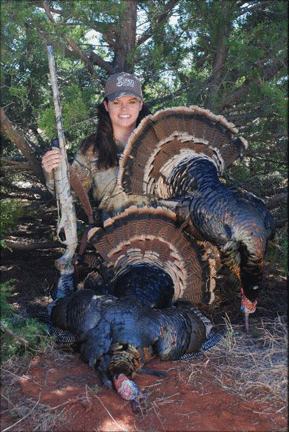
As for me, I tend to be rough on equipment, a princess I am not; still there are often things out of your control such as the endless battle with the red dirt. Rick White, pro staffer for Hunter Specialties chose to guide me as we chased bird number two. When you hunt with Rick, a 10-time Iowa State Calling Champion it is just a matter of time before you’re given a shot opportunity, so you and your equipment better be ready.
After Rick, Cristi and I arrived at our evening hunting spot I prepared to load my gun. As I jacked a shell into the chamber I noticed the large amount of red dirt in the barrel, despite the fact that my gun had been in a case while driving. With no time to clean the gun before our hunt began, I could only hope that the excessive amount of dirt would not cause a malfunction. Thanks to Rick’s champion calling skills, I soon tagged my second gobbler, I emptied my remaining shells along with another a handful of dirt, obviously the excessive dirt in the Vinci barrel did not cause any problems, although I could swear that I saw of puff of red dust fly when I shot the bird. Perhaps the dirt added an extra wallop to the Federal load I was using, but I doubt it. Ideally you should always have a clean gun, but with real, in-the-field hunting situations it is not always possible to do so.
Perhaps Leonardo Da Vinci, master artist, innovative thinker and the namesake of the gun said it best, “Simplicity is the highest form of sophistication.” Benelli has created a shotgun that is simple, hassle-free and fun to shoot. Guns and Ammo magazine’s Peyton Miller said, “the only thing wrong with the Vinci is that you can’t keep it loaded.” I tend to agree with Peyton.
From the fertile farm fields of South America to the target rich rolling hills covered in red dirt, the Benelli Vinci really doesn’t need any slick marketing campaign to convince serious shooters that this gun is worth its weight in gold and is well on its way to the front of the gun safe.
Useful resources:







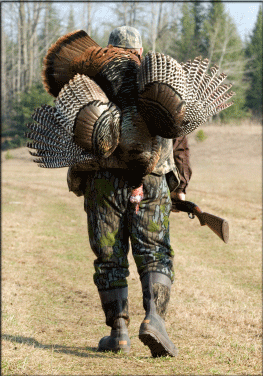
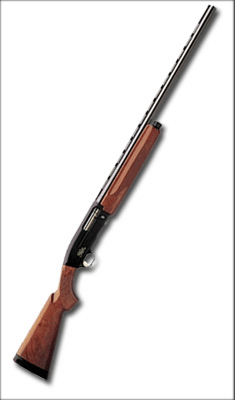


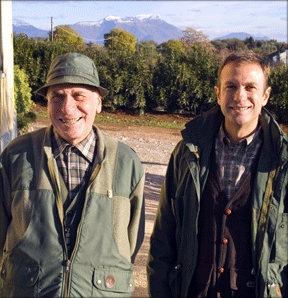

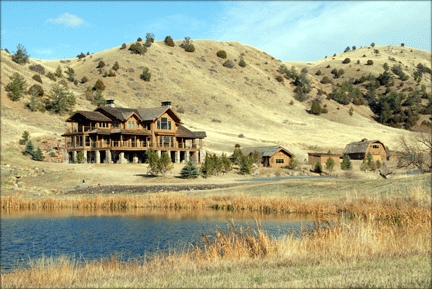 The Gray Cliffs Ranch Lodge[/caption]
The Gray Cliffs Ranch Lodge[/caption]
